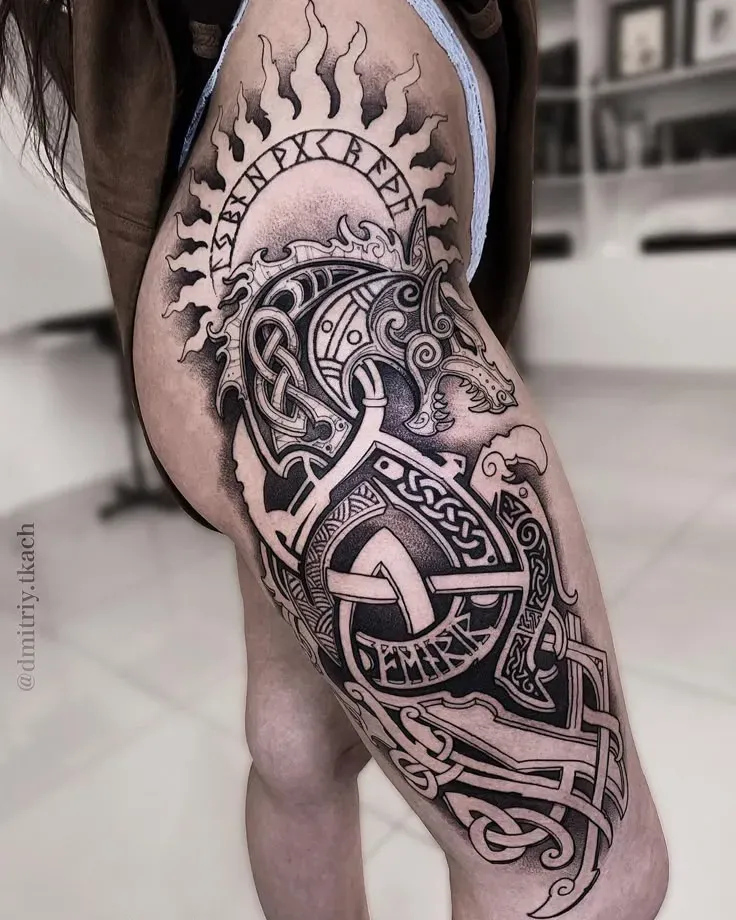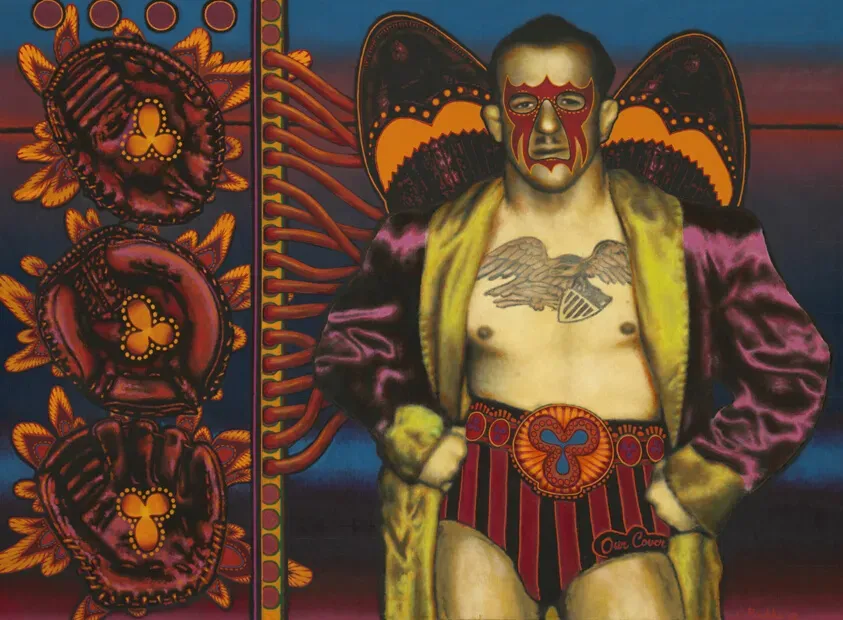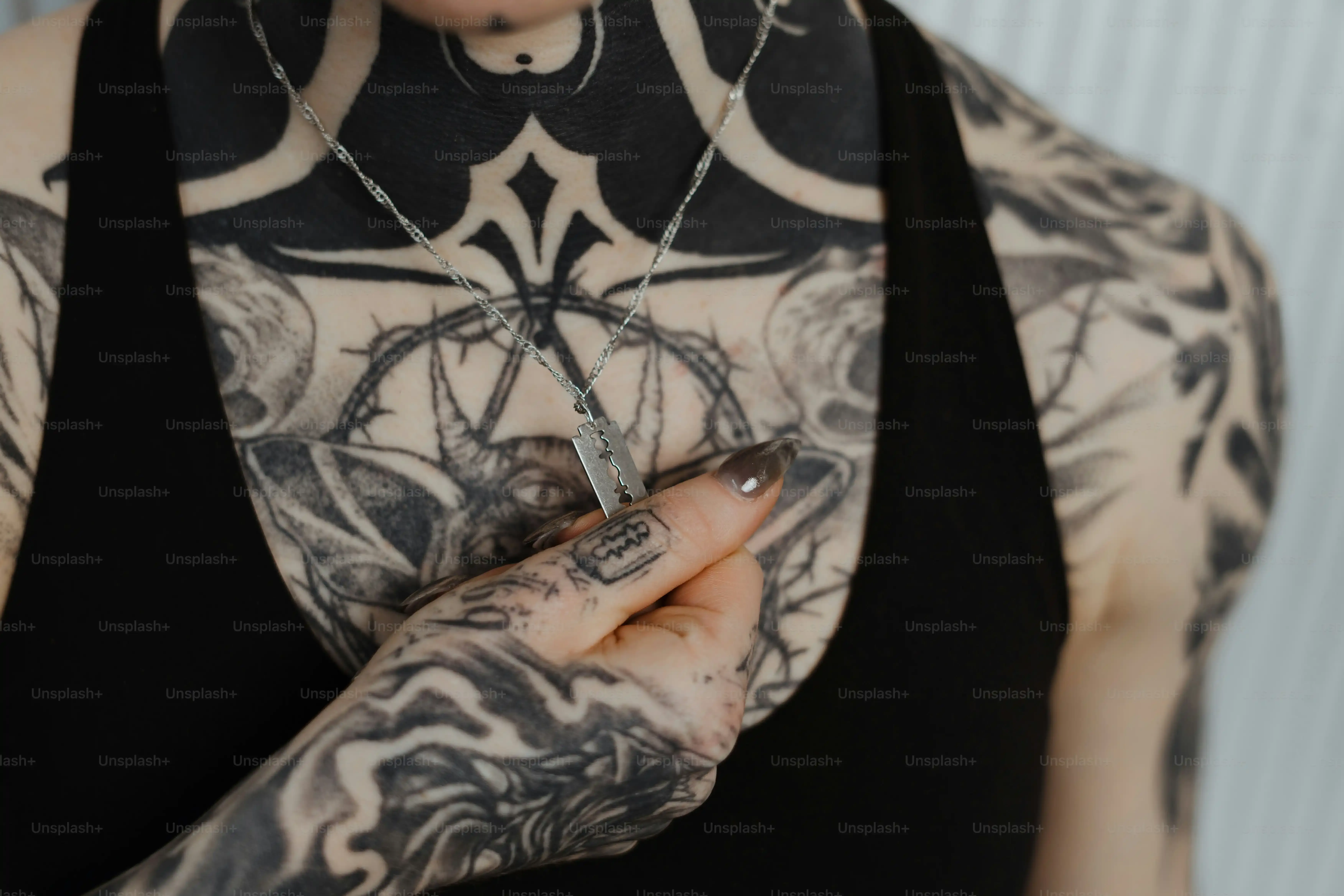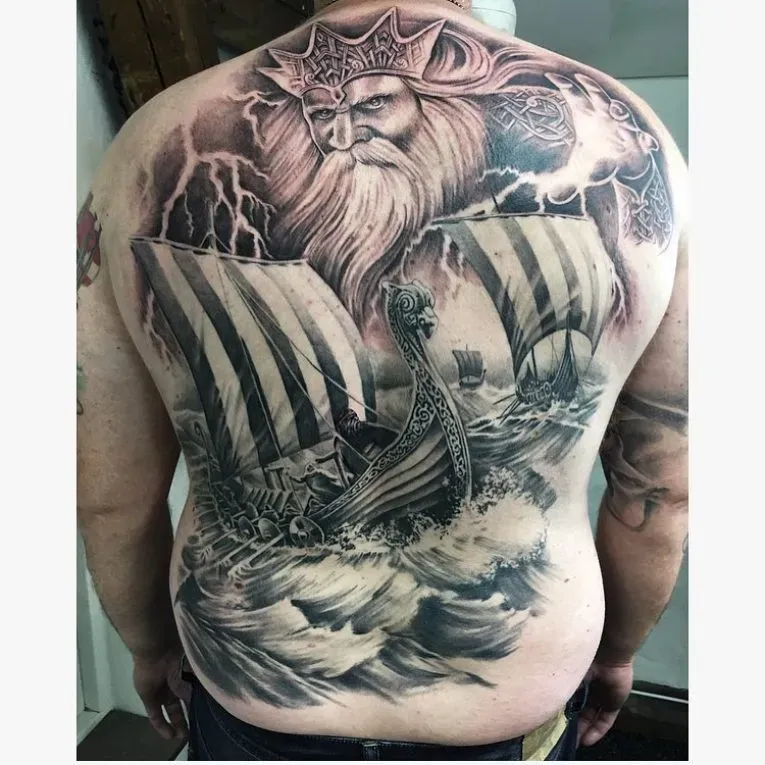Table of Contents
Thinking about getting some ink inspired by the Norse? Maybe you've seen those cool images online, the intricate knots, the powerful symbols, and thought, "Yeah, that's the vibe." You're not alone. Tattoo designs viking have exploded in popularity, moving far beyond history buffs and metalheads. People are drawn to the raw power, the connection to ancient beliefs, and let's be honest, they just look damn cool. But slap a Vegvisir or a Mjolnir on your skin without knowing what it *really* means? That's like wearing a band t-shirt for a band you've never heard of – a bit cringe, and potentially disrespectful to a rich, complex culture. This isn't just about picking a cool picture; it's about carrying history. So, before you commit to a lifetime of Nordic pride (or potential regret), let's cut through the noise. We'll dig into the real stories behind popular tattoo designs viking, talk about picking the right spot and artist, look at how these ancient symbols are showing up in modern art, and cover the crucial bit: keeping your new masterpiece looking sharp for years to come. Ready to figure out if Viking ink is truly for you?
Decoding Ancient Symbols: Meanings Behind Popular Viking Tattoo Designs
Decoding Ancient Symbols: Meanings Behind Popular Viking Tattoo Designs
Hammer Time and Wayfinders: Popular Picks
Alright, so you're diving into the world of tattoo designs viking. First things first, let's talk symbols. Everyone sees Mjolnir, Thor's hammer, and yeah, it's a classic. It's the go-to for protection, strength, and honestly, just screaming "don't mess with me" in a subtle way. You see it everywhere, from delicate wrist pieces to massive chest plates. It's the ancient equivalent of a four-leaf clover and a bodyguard rolled into one. Then there's the Vegvisir, often called the Viking compass. The lore says it guides the traveler through rough weather. Sounds nice, right? Like a personal GPS for life's stormy seas. People love it for that sense of direction and not getting lost, whether on land or just navigating their own heads. Just remember, while these symbols are ancient, their exact use as personal talismans or tattoo designs in the Viking Age is debated. Some scholars say the Vegvisir is actually from much later Icelandic grimoires, not true Viking artifacts. Kinda throws a wrench in the "pure historical accuracy" argument, doesn't it?
Helms of Awe and Raven Companions
Moving on, you've probably seen the Aegishjalmr, the Helm of Awe. It looks like a spiky asterisk or snowflake, depending on how you squint at it. This one's all about power and victory in battle. Warriors supposedly wore it between their brows to strike fear into enemies. Getting this one inked feels pretty hardcore, a declaration of inner strength and maybe a bit of intimidation. Then you have Odin's ravens, Huginn (thought) and Muninn (memory). These two flew all over the world, bringing news back to the Allfather. Having them tattooed can symbolize knowledge, wisdom, or even a connection to the spiritual realm. It's a less literal power symbol than Mjolnir or Aegishjalmr, more about the mind and connection to the wider world. I spent weeks digging through old texts trying to pin down definitive meanings, and honestly? It's messy. Interpretations vary wildly depending on the source, the era, and who you ask. So while these are the generally accepted ideas, be prepared for some historical ambiguity.
Common Viking Symbols and Potential Meanings:
- Mjolnir (Thor's Hammer): Protection, strength, power, consecration.
- Vegvisir (Wayfinder): Guidance, not losing one's way in storms or difficult times.
- Aegishjalmr (Helm of Awe): Protection, power, victory over enemies, inspiring fear.
- Huginn & Muninn (Odin's Ravens): Thought, memory, wisdom, connection to Odin.
- Yggdrasil (World Tree): Connection between the Nine Realms, cosmic order, life, fate.
- Valknut: Often associated with Odin, death, and the afterlife, though its exact meaning is debated.
- Runes: Individual letters with symbolic meanings, used for writing, divination, or protection. Be careful with these; spellings and meanings can be complex and sensitive.
Choosing Your Viking Tattoo Designs: Placement, Pain, and Artists
Choosing Your Viking Tattoo Designs: Placement, Pain, and Artists
Where to Put That Hammer and How Much It'll Hurt
Alright, you've wrestled with the symbolism of tattoo designs viking and maybe settled on a concept. Now comes the practical stuff: where does this go on your body, and how much are you willing to suffer for it? Placement is huge. A massive, detailed longship might look epic on a back or chest piece, giving the artist plenty of canvas to work with the intricate knotwork often found in these designs. A smaller rune or Vegvisir could fit nicely on a wrist, ankle, or behind the ear. Think about visibility – is this something you want to show off constantly, or keep more personal? Then there's the pain factor. Let's not sugarcoat it: getting tattooed hurts. Areas with thin skin and close to bone, like ribs, feet, hands, or elbows, tend to be spicy. Fleshy areas like the outer arm, thigh, or calf are generally more tolerable. A full sleeve of complex tattoo designs viking? That's a commitment, both in time and pain tolerance. Talk to your artist, they can give you a realistic heads-up on what to expect for your chosen spot.
Finding the Right Hand for Your Norse Art
So you know what you want and roughly where it's going. Now, for the love of Odin, find a good artist! This isn't the time to go to the cheapest place with a sign out front. Viking and Norse-inspired tattoo designs often involve detailed line work, specific knot patterns (like Borre or Jelling styles), and an understanding of the aesthetic. Look for artists who specialize in blackwork, dotwork, or geometric styles, as these often lend themselves well to the look. Check their portfolios religiously. Does their work look clean? Are the lines crisp? Do they have examples of similar complex pieces? Don't be shy about asking questions or requesting a consultation. A good artist will be happy to discuss your ideas, suggest placement, and even refine the design. Finding someone who respects the history and can translate it into ink is key to getting a tattoo you won't regret in five years.
- Consider visibility and your lifestyle.
- Think about future additions or larger pieces.
- Research pain levels for different body parts.
- Look for artists specializing in Norse or blackwork styles.
- Check portfolios thoroughly for clean lines and detail.
- Schedule consultations before committing.
Beyond the Mythology: Modern Takes on Viking Tattoo Designs
Beyond the Mythology: Modern Takes on Viking Tattoo Designs
Old Symbols, New Skin: Reimagining Classics
So, you've seen the classic Mjolnir, the Vegvisir, the Helm of Awe splashed everywhere. But what happens when artists take these ancient symbols and run with them? You get some seriously cool, non-traditional tattoo designs viking. Forget the rough, scratchy look of historical carvings; modern artists are integrating dotwork, geometric patterns, and even abstract elements. They might take the intricate knotwork of a Borre style and blend it with crisp blackwork shading or negative space. Or they'll depict Yggdrasil, the World Tree, not as a simple line drawing, but as a sprawling, complex piece incorporating realistic elements like roots and branches, sometimes even blending it with other cultural motifs. It's about respecting the source material while pushing the artistic boundaries. It’s not your great-great-great-great-grandfather's tattoo, that's for sure, but it keeps the spirit alive in a fresh way.
Mixing Eras and Styles: Viking Meets... What?
This is where things get really interesting with tattoo designs viking. Who says you have to stick *only* to Norse mythology? Artists are pairing Viking themes with all sorts of unexpected styles. Think a traditional Viking ship rendered in a Japanese ukiyo-e style, or a fierce Berserker depicted with elements of cyberpunk. Some folks are incorporating realistic portraits of Norse gods or historical figures, but adding abstract splashes of color or integrating them into larger, non-traditional compositions. It’s about personal interpretation and making the ancient feel relevant *to you*, right now. It might ruffle the feathers of historical purists, but honestly, art evolves. If you want a raven with mechanical wings or a Valkyrie riding a motorcycle, find an artist who can make that weird, wonderful vision a reality. It's your skin, after all.
As one artist I spoke to put it:
Caring for Your Viking Tattoo Designs: Aftercare Tips
Caring for Your Viking Tattoo Designs: Aftercare Tips
Fresh Ink, Happy Skin: Keeping Your Viking Art Vibrant
you've got your awesome new Viking tattoo designs etched into your skin. Looks great, right? Now don't mess it up! Proper aftercare isn't just a suggestion; it's crucial for how your tattoo heals and looks for years to come. Think of it like caring for a fresh wound, because, well, it is one. Your artist will likely wrap it up; follow their instructions precisely on when to remove it. Once it's off, you need to gently wash it with mild, unscented soap and lukewarm water. Pat it dry with a clean paper towel – cloth towels can harbor bacteria. After that, a thin layer of recommended tattoo ointment or lotion is your best friend. Don't glob it on; the skin needs to breathe. You'll be doing this washing and moisturizing routine several times a day for the first couple of weeks. It feels like a chore, but skipping it can lead to infections, poor healing, and a faded or patchy tattoo. Nobody wants their epic Norse saga turning into a blurry mess.
Seriously, avoid soaking your new ink. No baths, hot tubs, or swimming pools until it's fully healed. Submerging it is a fast track to infection and ruining the ink. Sun exposure is also a major enemy; UV rays break down tattoo pigments faster than a Berserker in a trance. Once healed, always use a high SPF sunscreen on your tattoo, especially on tattoo designs viking with fine details or intricate knotwork that you want to keep sharp.
- Remove initial bandage as directed by your artist.
- Wash gently with unscented soap and lukewarm water 2-3 times daily.
- Pat dry with a clean paper towel.
- Apply a thin layer of recommended tattoo lotion or ointment.
- Avoid soaking in baths, pools, or hot tubs during healing.
- Keep your new tattoo out of direct sunlight; use SPF after healing.
- Resist the urge to pick or scratch at scabs.
More Than Just Ink: The Last Word on Viking Tattoo Designs
So, you've navigated the knots, pondered the power of the hammer, and maybe even considered the raven's wisdom. Getting tattoo designs viking is a significant move, a visual commitment to a history and set of beliefs that are far more nuanced than a horned helmet stereotype. It's not just about looking tough or trendy; it's about carrying a piece of the past, respecting the symbols, and understanding what they meant to the people who lived and died under their gaze. Choose wisely, find an artist who gets it, and remember that good ink, like good stories, lasts a lifetime. Don't rush the process, and definitely don't skip the aftercare. Your skin, and the ancestors (maybe), will thank you.